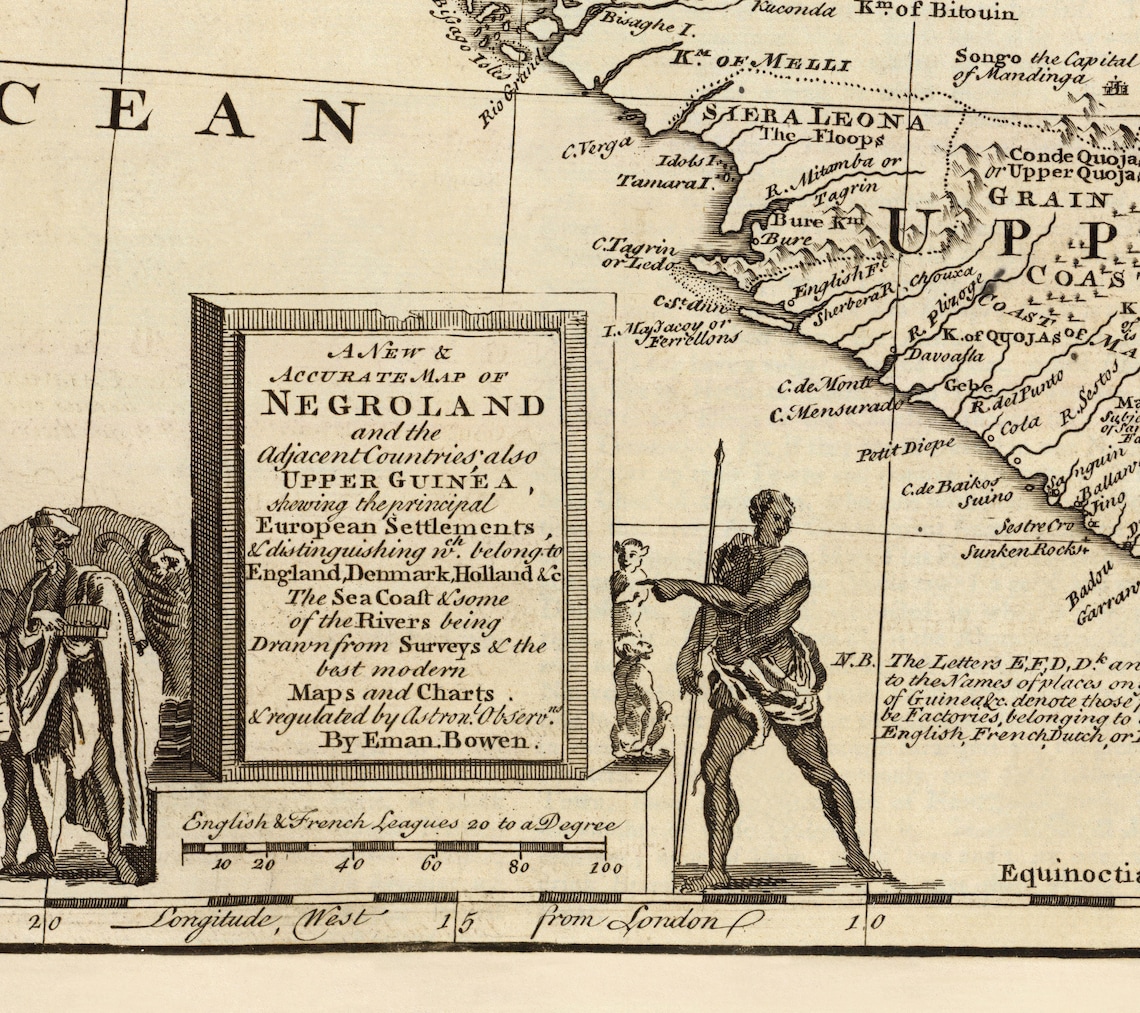


In 1823, approximately the same area was described as "Nigritia" on an American map published by Fielding Lucas Jr. Moll's map labels Gambia, Senegal, Mandinga and many other territories. "Negroland" was the territory to the north of this, along the east–west axis of the Niger River, and the west-facing coast. Herman Moll's 1727 map labels these " Grain Coast", " Slave Coast", and " Gold Coast".

"Guinea", not to be confused with the modern country, then referred to the south-facing coast of West Africa and the land stretching upriver from there. "Negroland" represented the area between the region of Guinea and "Sahara" or "The Desert", the Sahara Desert.

Some of the greatest states of those considered part of Negroland were the Bornu Empire and the Sokoto Caliphate. The name was given by Persian navigators when they visited the area in the middle ages. The Persians called these areas Zangistān (زنگستان), meaning "Land of the Blacks" and the name Zang for black still remains in the name of Zanzibar (from Persian زنگبار (Zangibār) meaning "The Coast of Blacks". There were various kinds of people in the area, including the Jews of Bilad as-Sudan. The term is probably a direct translation of the Arabic term Bilad as-Sudan (بلاد السودان), meaning "Land of the Blacks", corresponding to about the same area. This area comprised at least the western part of the region called Sudan (not to be confused with the modern country). Negroland, Nigrita, or Nigritia, is an archaic term in European mapping, referring to Europeans’ descriptions of West Africa as an area populated with negroes. Explaining what belongs to England, Holland, Denmark & c. A 1729 map titled: "NEGROLAND and GUINEA, with the European settlements.


 0 kommentar(er)
0 kommentar(er)
